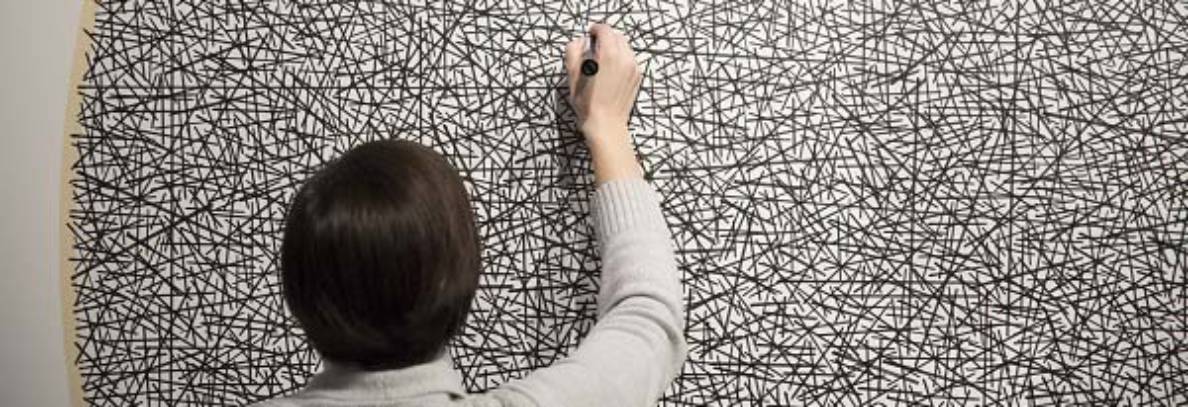One Kilometer
Katja Heitmann article response:
Field Trip Notes
I love artworks that are explained or take on a new/further meaning after reading the title and exhibit label, so I found the piece of gold chains hung on a black background in the shape of the African Diaspora very intriguing. Its simplistic design was very clever (contextless on its own, but possibly recognizable to some before they even read the exhibit label) and chock-full of metaphor. The piece depicting a refurbished cop car cut in half, suspended on cinderblocks, and graffitied, was also one that developed new meaning after reading the exhibit label. The person I visited the exhibit with even partially brushed past it until I relayed the accompanying description, and they were likewise intrigued by it. The meaning of the piece I thought was beautiful—as many memorial artworks are—and each aspect held striking symbolism for the overall meaning of the piece.
Similarly, it seems I’m also drawn to artworks that take figuring out, and/or evolve the longer you look at it. The piece “RID UM” by Wilmer Wilson IV was one I was mildly interested in until I read the exhibit label and got to look at it again in new light. Initially I didn’t look too closely and thought it was an image made of sequins or some similar material, I was surprised to read that instead, it was a printed image densely covered in staples, evocative of telephone poles holding the remnants of countless posters over many years.
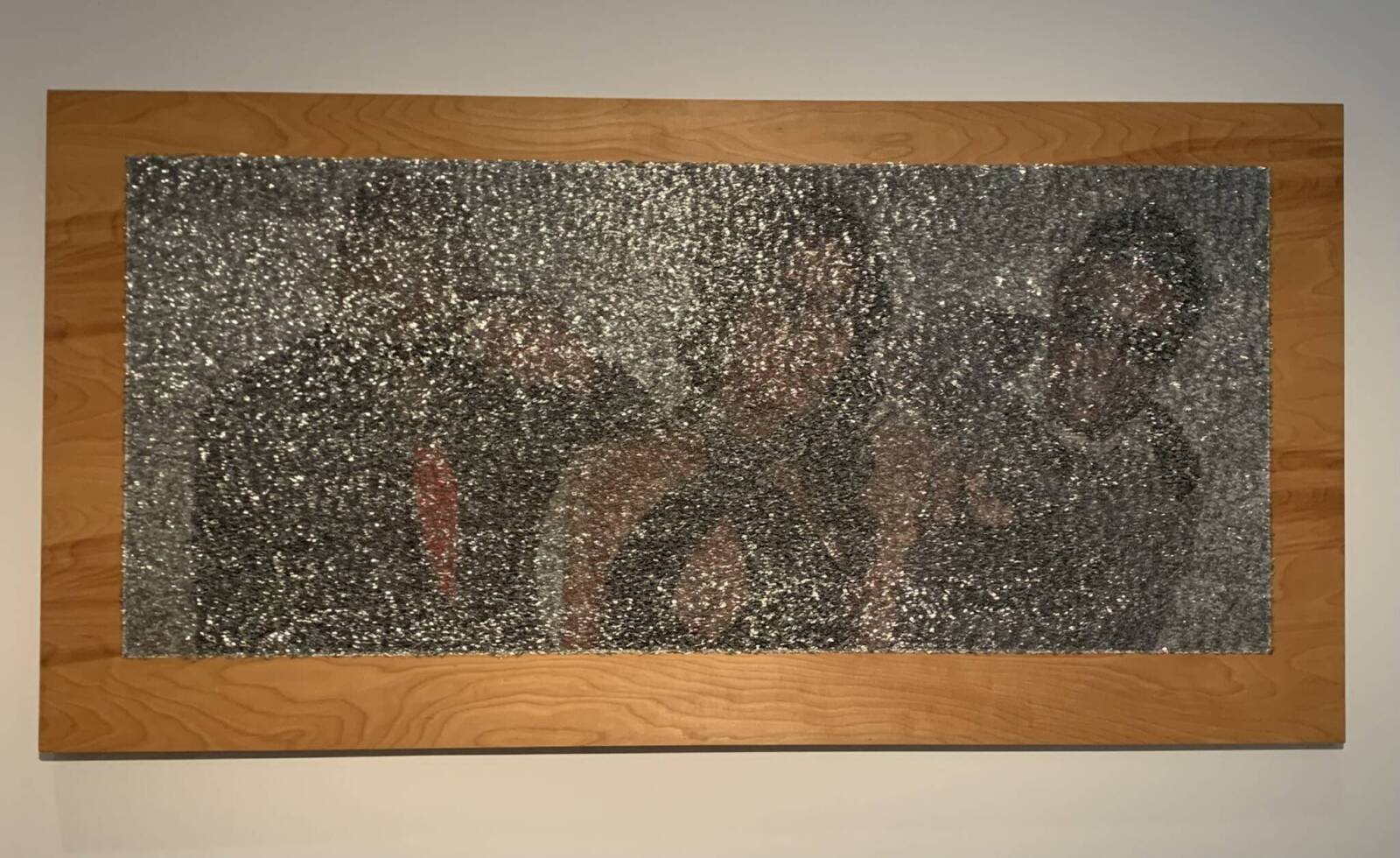
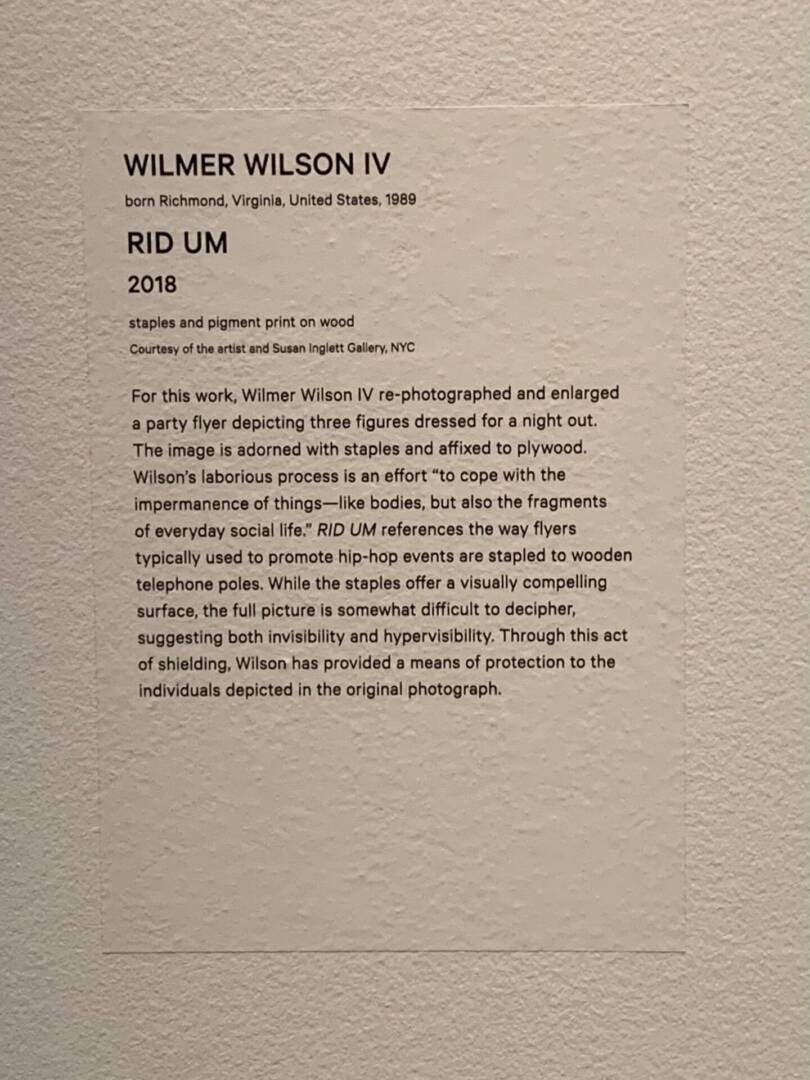
Shirt’s piece “Don’t Talk To Me About No Significance Of Art” was also one I found myself thinking about a lot. This was a piece that was also heightened by reading the background context provided by the exhibit label. The part on opinions on photography gathered from mainly non-photographers was thought-provoking, and adapted further into the meaning of this piece, provocative and relevant.
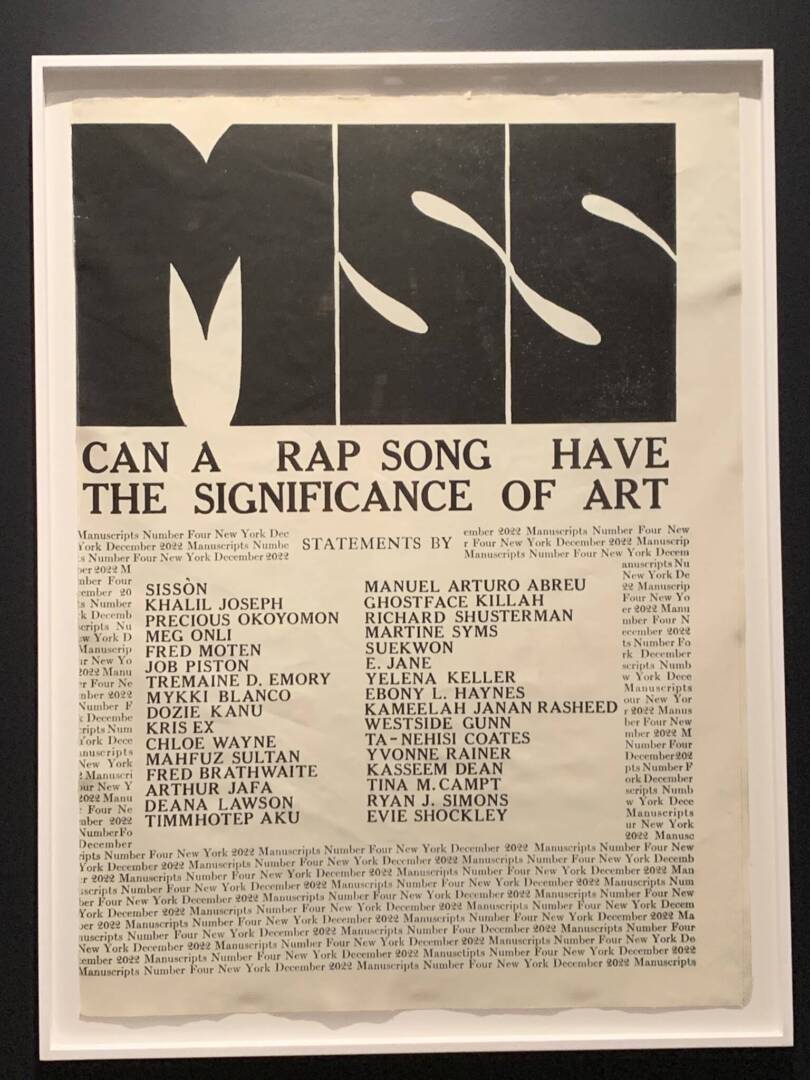
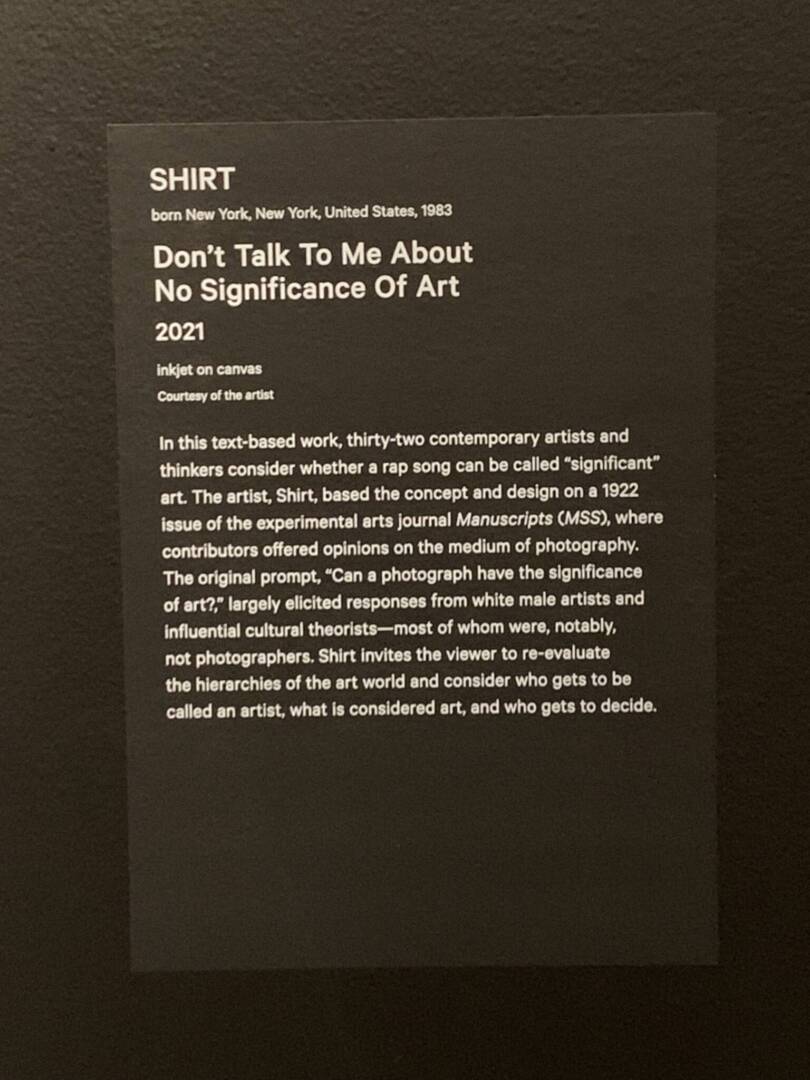
I took away more from this exhibition than I thought I would and (as one usually more partial to classical art) I enjoyed it more than expected. I took away many peeks into many more perspectives than my own, as well as some new understandings of hip-hop culture and some of the things influential to it. There were many artists I took note of as I walked through the exhibit to find later on and follow the rest of their works.
This exhibition showcased an impressively wide variety of mediums and got me thinking about the flexibility of contemporary art, and the many possible utilizations of its nonconformity; ideas of which I can then incorporate into my own practice.
One feat, Three ways: Censor
1 Minute Audio
Conceptual Portrait
Little Red Box of Obituaries and Unsent Letters
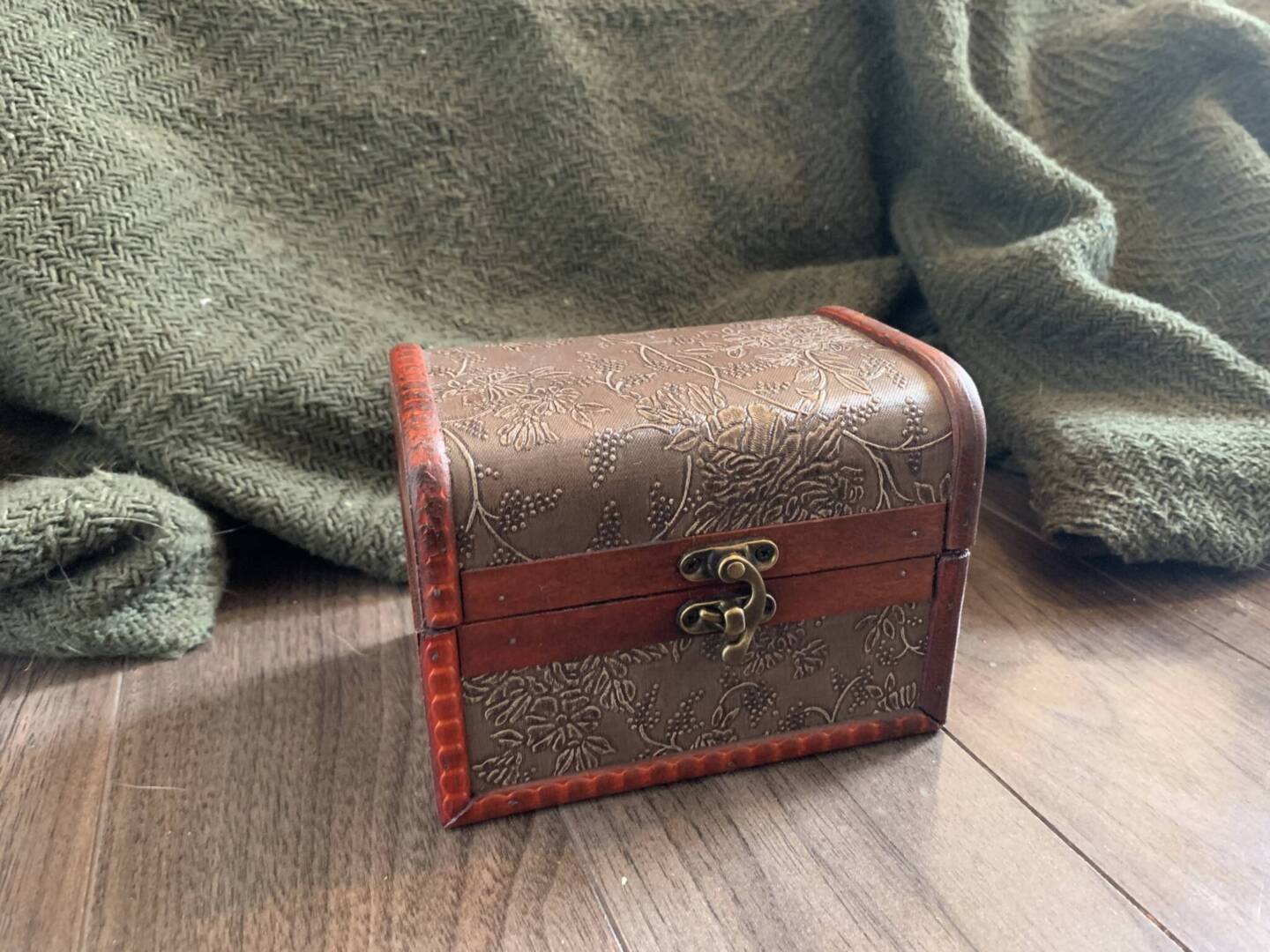
I am a person of many unsaid words. I have also, in recent years, found myself experiencing a lot of anticipatory grief. This portrait takes the form of a collection of letters I have written over the years to cope with both of these things.
When I was in high-school, I started writing letters as a way to manage all the emotions and thoughts I had but couldn’t share. It acted as a way to get these things out of my head where they circled and nagged at my thoughts, to be able to express these emotions in the moment and move on from them. I found it actually helped greatly, and I continue to write such letters to this day. The idea of writing obituaries for people that are still very much alive seems morbid, but I write each one more as a piece on remembrance and appreciation rather than focusing overly on grieving.
This project serves as a portrait not just of me now but me at many earlier stages of my life. Where other pieces of myself are externalized and shared through my art or conversation, this piece is ‘captured thought’ in a way that maintains it as internalized and private. Even for these earlier written letters, I wrote them and tucked them away, not intending them to be read again. Each existing letter was read only once more to be transcribed, and sealed away again to continue the intent of this project.
Included in this box are letters and obituaries for my parents, current and past friends, younger versions of myself, and strangers.
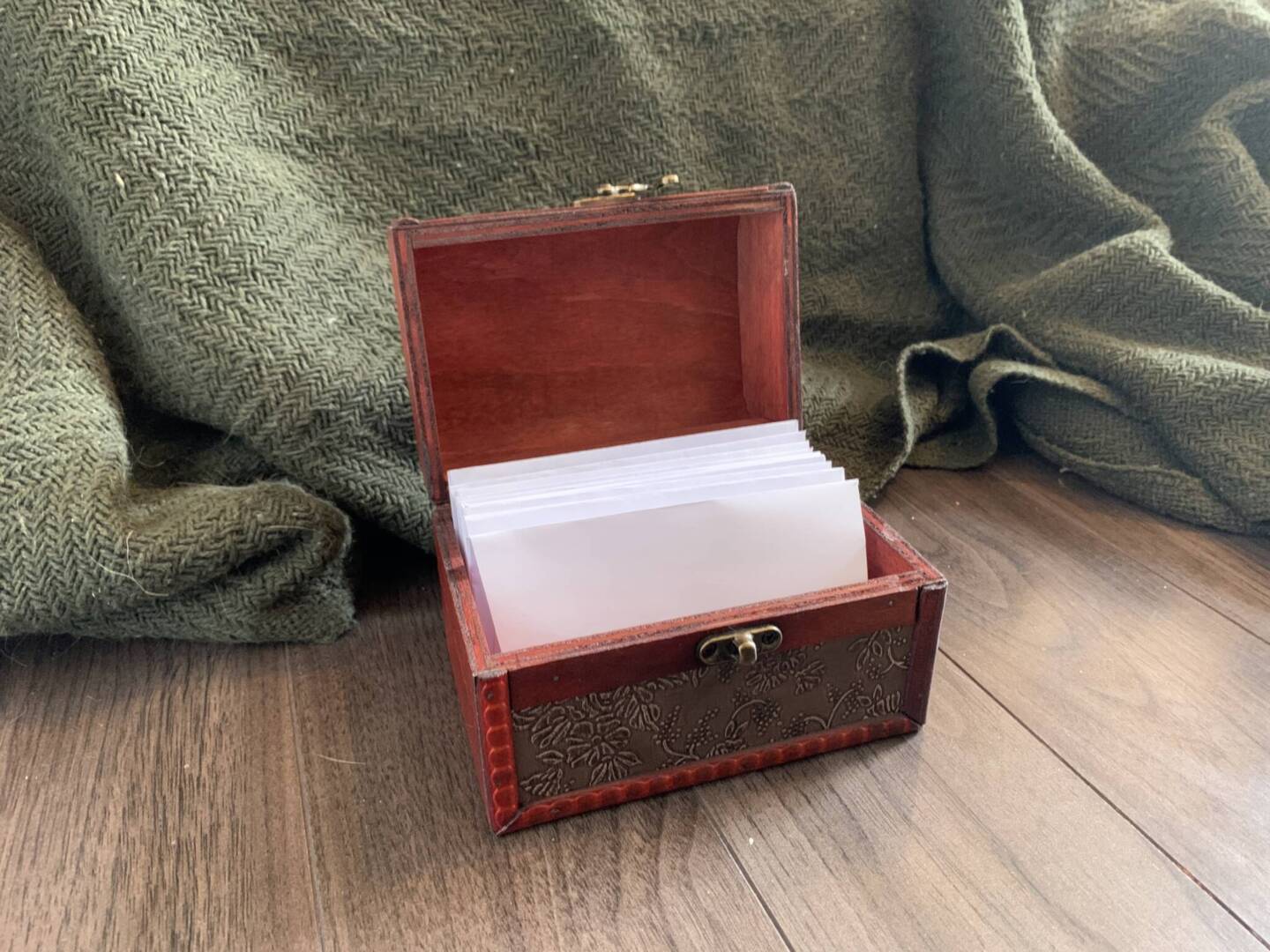
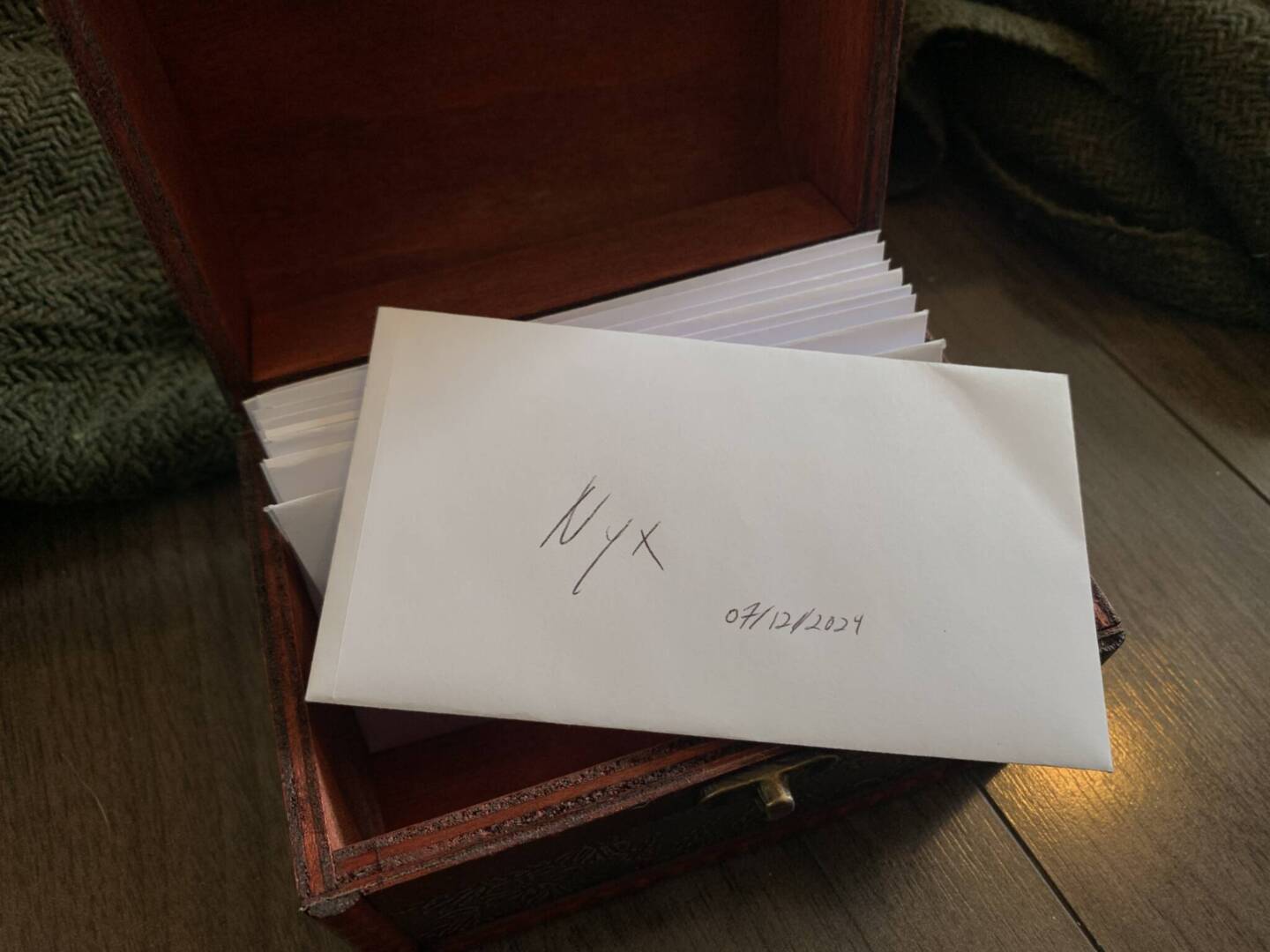
Though this is an unfinished project (more letters and obituaries will be added as I write them) each envelope is sealed, dated, and placed in the box not to be opened and read again.
Artist Multiples
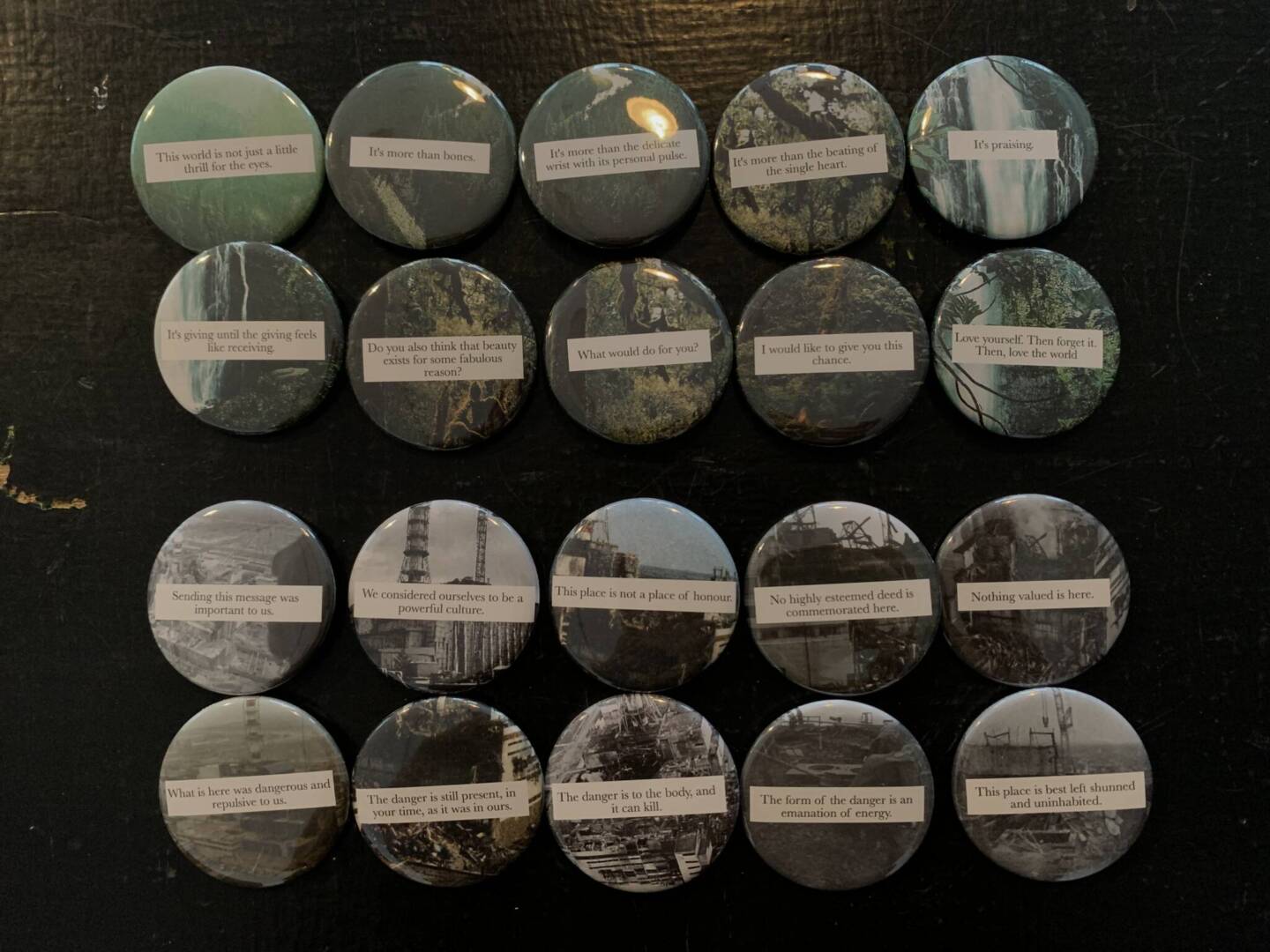
For this project I made a collection of pins that exist as a wearable art collection/statement. I juxtaposed human destruction and worship of nature; pairing 10 lines from Mary Oliver’s To Begin With, The Sweet Grass with cropped images of nature from the National Geographic archive, and 10 lines from the long-term nuclear waste warning message with cropped photographs from the Chernobyl nuclear disaster clean-up efforts.
I did handpick lines from both the poem and the warning message, and though each line exists in its original form, punctuation included, I chose lines that looked and read better on their own as well as leaving out lines I felt made the pins too self-referential or self-aware of their existence as buttons to be worn. Some lines were also chosen to specifically feel like they are speaking to the viewer; if worn around in public, making this project a sort of call to action or accusation.
I chose images from National Geographic and placed the text on top in white boxes to emulate the style of pins hand made from cut up magazines at summer camps and school craft days, partially for aesthetics, and partially for more juxtaposition of a childish activity and a more mature issue.
Excerpts used:
Lines from long-term nuclear waste warning message used are:
- Sending this message was important to us.
- We considered ourselves to be a powerful culture.
- This place is not a place of honour.
- No highly esteemed deed is commemorated here.
- Nothing valued is here.
- What is here was dangerous and repulsive to us.
- The danger is still present, in your time, as it was in ours.
- The danger is to the body, and it can kill.
- The form of danger is an emanation of energy.
- This place is best left shunned and uninhabited.
The lines from To Begin With, The Sweet Grass are:
- This world is not just a little thrill for the eyes.
- It’s more than bones.
- It’s more than the delicate wrist with its personal pulse.
- It’s more than the beating of the single heart.
- It’s praising.
- It’s giving until the giving feels like receiving.
- Do you also think that beauty exists for some fabulous reason?
- What would do for you?
- I would like to give you this chance.
- Love yourself. Then forget it. Then, love the world.
